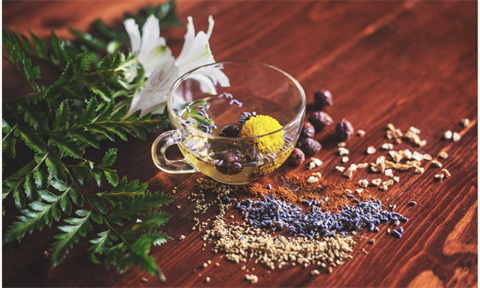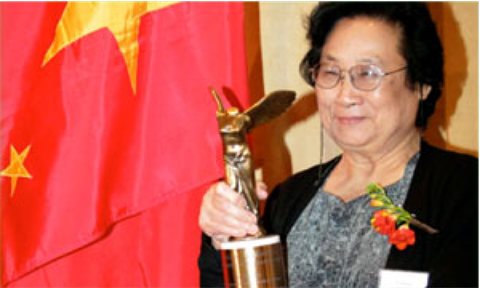Experimental Aesthetics: The scientific study of beauty
“Do I wear too much makeup?” “Is this dress / tie / haircut “too much?” “Is this make-up appropriate during the summer?”
NatalieTruong, ACI Research Fellow
Georgios Christopoulos, ACI Fellow & Assistant Professor, Nanyang Business School, Nanyang Technological University
“Do I wear too much makeup?” “Is this dress / tie / haircut “too much?” “Is this make-up appropriate during the summer?”
Such questions are posed not only by millions of men and women everyday, but also by marketing specialists when they are designing their new TV advertisements, reflecting on their salespeople or evaluating receptionists for high-end hotels. Human beauty is particularly important for marketing. Everyday consumers interact with service providers in stores, and are exposed to commercials in which products are promoted by models or endorsers. A common problem that marketing specialists face is whether they should employ beautiful faces and attractive salespeople to advertise their products. Though the general assumption, called the “beauty premium”, is that attractiveness is preferable because it attracts attention, the answer seems to be far more complex. In retailing, for example, beautiful salespersons and service providers are assumed to attract consumers and elicit favorable consumer reactions. But, others could claim that beautiful sellers could instead be perceived as intimidating to customers. So would less attractive but perhaps more common (“average”) faces be more effective for certain types of products and consumers, whereas more beautiful and glamorous faces more suitable for others? Or, if indeed we prefer attractive faces, what is the optimal level of attractiveness for a particular context?
Experimental Aesthetics
We sought to study and answer these questions using a systematic, objective and scientific approach. Armed with insights and concepts from cognitive science and methods stemming from neuroscience, we have employed a conceptual framework termed “Experimental Aesthetics”. Below we explain in brief the history, concepts and intriguing possibilities that this approach could offer marketing specialists.
A major problem in understanding beauty is that it is, without a doubt, a concept that is difficult to verbalise (and this is why intuitive approaches might be better than, for instance, surveys or focus groups). Thus, an appropriate approach is to remove linguistic references as much as possible. In fact, this is very critical in cross-cultural research, as the word “beautiful” itself could have multiple meanings. Another problem is that the appraisal of beauty and/or its effect is often subconscious. Current approaches also assume that consumers are able to understand, express and remember their own preferences, which is not always the case. Finally, yet most importantly, there is an underlying assumption that beauty preferences are static and relatively stable – something that we know intuitively and historically is not true (Truong & Christopoulos, 2016).
From Plato to Max Factor to plastic surgery
Beauty has been the topic of numerous disciplines, ranging from philosophy to business. Philosophers as early as Plato suggested that beauty, together with goodness, justice and truth, is one of the ideals for human development. Through the ages, from Helen of Troy in Greek mythology and the Egyptian Queen Nefertiti to beauty icons such as Audrey Hepburn, human beauty has always and continues to amaze humans. For centuries, philosophers and scientists have tried to define a universal ideal of beauty; St. Augustine said that beauty was synonymous with geometric form and balance, while Aristotle defined beauty as “order and symmetry and definiteness”. Beauty might be easy enough to spot, but is not easy to define. People might recognise that something is beautiful, but less likely to understand why it is so. In fact, the idea of examining beauty experimentally is not novel. Back in the 1930’s, Max Factor, the father of makeup, invented the “Beauty Micrometer”, also known as the Beauty Calibrator, to analyze facial measurements and identify the areas of a person’s face that need to have their appearance reduced or enhanced in the makeup process. The machine had 200 measurements which could detect subtle asymmetries, allowing adjustments to make a person more symmetrical. He coined the term “makeup” based on the idea that one was using these products ‘to make up for flaws’.

Figure 1. Max Factor’s “Beauty Micrometer”
This anthropometric rationale (i.e. the systematic measurement of physical properties) is still a fundamental characteristic of the beauty industry today. There are ideal ratios relating to the precise shape, size, and proportions of facial features that qualify a face as beautiful. For instance, the principle of the long-established “Golden Ratio” adopted by artists and architects to quantify artistic beauty and perfection has also been applied to the evaluation of human beauty, such that an ideal face should be two-thirds as wide as it is tall, with a nose no longer than the distance between the eyes. Indeed, in 1997, Dr. Stephen R. Marquardt, a renowned plastic surgeon introduced the Marquardt Mask, a robotic-looking web of lines that dissects faces using the principle of the golden ratio (phi Φ, 1.618).
Make-up artists too follow these prescriptive guidelines and use cosmetic products and techniques to enhance the harmony among facial features. For example, applying blusher on the forehead and chin can help shorten a face that is overly long and thin; while blending eyeliner up on the outer edge of the eyes and adding a lighter shadow at the inside corner can increase the illusion of width in those whose eyes are deemed too close together. Some people seek a more permanent solution through various surgical as well as non-surgical cosmetic procedures. In Asia, for example, the cosmetic surgery industry is booming and no more so than in South Korea. The country has the highest per capita rate of plastic surgery in the world (Frame, 2016). Facial surgery is especially popular and several common operations include creating V-shaped chins, smaller noses and altered eye shapes.
Despite the challenges inherent in defining beauty, the motivation for both researchers and practitioners to do so remains considerable. This is particularly so for marketers who, as we highlighted above, wish to determine the most appropriate and effective level of physical beauty that should characterise their retail salespeople, endorsers, and service personnel. To examine beauty in a systematic way, one Microsoft engineer developed “beautification” software during his graduate studies at Tel Aviv University (http://leyvand.com/beautification/). The software is based on a study in which 100 photos of women and men were rated in terms of facial attractiveness. The size and distance between the features of each face were measured and correlated with

Figure 2. Demonstration of the Marquardt Mask
attractive ratings. The resulting beauty scale enables the software program to morph any face towards a higher attractiveness rating. However, this software, as well as other existing face databases, allows the examination of attractiveness only of bare faces without make-up. Indeed, existing research on beauty perceptions has largely focused on the biological factors, while little attention has been paid to the effects of adornment such as cosmetic use (Etcoff et al., 2011).
Adopting the proper tools: the “fruit-fly model” of beauty research and how to use it
The lack of a systematic and consistent set of facial stimuli is one of the obstacles for researchers and companies intending to study beauty perceptions and cosmetic consumptions in Asia. This is unfortunate given the increasing consumption of cosmetic products in Asian countries. Asia Pacific leads the cosmetic industry with a market share of 35% in 2014, followed by Western Europe and North America (Research and Markets, 2014). With an aim to fill that gap, we are developing an Asian face make-up database. We capture images from different camera angles of Asian women in different age groups and with different make-up styles (natural, trendy, professional, and glamorous).

Figure 3. Demonstration of our Asian Make-up Database
So how might this database be used? Below are just a few of the industry sectors that have specific requirements for such a database. The service industry, including tourism and hospitality, is interested to investigate which levels of make-up are appropriate for their employees, and whether different levels might provoke different mindsets amongst their customers. Marketing companies will be able to examine whether faces are perceived as more attractive and persuasive depending on the angle in which they are shown, which may also have an impact on the way different facial emotions are perceived. Cosmetic and fashion companies can exploit the database to conduct research on consumer preferences, including whether they differ across demographic groups. They are also keen to establish using these faces whether cosmetic preferences depend on psychological (e.g. would the same consumer prefer different makeup styles, and subsequently different cosmetic products, when she is tired or not?) or contextual factors (e.g. whether make-up preference might be influenced by the size/space of the retail outlet), or even the season and weather.
Looking ahead, systematic methods inspired from epidemiology, “Big Data” and cognitive science will allow us to scientifically study beauty perceptions. Subconscious effects can be more readily monitored; biometrics such as heart rate or eye-tracking technology can also be used (e.g. Yap et al., 2017). But there is more. By combing experimental aesthetics with Big Data approaches (e.g. using apps and other data technologies) we would be able to study beauty in a larger scale across numerous countries. Moreover, we could even continuously monitor beauty preferences as a function of time or season (and adjust the online marketing strategy accordingly: e.g. to display more beautiful faces when the context dictates they are more effective). Further, we can use wearable devices to test if there is any relationship between beauty/cosmetic preferences and biological factors such as the quality of sleep a person had the previous night. We also use Randomised Controlled Trials, a method commonly used in medical research, in which people are randomly allocated to receive one of several clinical interventions, with one being the standard of comparison or control. In our case, for instance, measuring purchase intentions after exposing consumers to different advertisements with different make-up styles, or no advertisement at all, would allow us to identify which advertising campaign might be better.
Overall, beauty has a significant role in the consumer's life, including health and wellness, identity and interpersonal relationships, among others. Systematically studying the underlying mechanisms could help us not only improve beauty products, but the overall wellness-related choices of consumers. Having a unique database of Asian faces will substantially aid in this research, especially in understanding beauty perceptions among Asian consumers.
References
Etcoff, N.L.; Stock, S.; Haley, L.E., Vickery, A.A., & House, D.M. (2011). Cosmetics as a Feature of the Extended Human Phenotype: Modulation of the Perception of Biologically Important Facial Signals. PloS ONE, 11(10): e0164218. doi:10.1371/journal.pone.0164218.
Frame, J. (2016). Global Plastic Surgery Hotspots. Retrieved from http://www.independent.co.uk/life-style/health-and-families/health-news/global-plastic-surgery- hotspots-a7072381.html
Research and Markets (2015). Research and Markets: Global Cosmetics Market 2015-2020: Market was $460 Billion in 2014 and is estimated to reach $675 billion by 2020. Retrieved from http://www.businesswire.com/news/home/20150727005524/en/Research-Markets-Global- Cosmetics-Market-2015-2020-Market
Marcinkowska, U., Kozlov, M. V., Cai, H., Contreras-Garduno, J., Dixson, B. J., Oana, G. A., Kaminski, G., Li, N. P., Lyons, M. T., Onyishi, I. E., Prasai, K., Pazhoohi, F., Prokop, P., Rosales Cardozo, S. L., Sydney, N., Yong, J. C., & Rantala, M. J. (2014). Cross-cultural variation in men’s preference for sexual dimorphism in women’s faces. Biology Letters, 10(4), 20130850. doi:10.1098/rsbl.2013.0850.
Truong, N. & Christopoulos, G. I. (2016). The effect of social exchanges on facial attractiveness judgments. Working paper presented at the 2016 North America Association of Consumer Research Conference, Berlin, Germany.
Yap, W. J., Christopoulos, G. I., & Hong, Y. Y. (2017). Physiological responses associated with cultural attachment. Behavioural Brain Research. (in press) doi:10.1016/j.bbr.2017.01.017
About the Authors
Dr. Natalie Truong is a Research Fellow of the Institute on Asian Consumer Insight.
Dr. Georgios Christopoulos is a Fellow of the Institute on Asian Consumer Insight and an Assistant Professor of Decision Neuroscience at Nanyang Business School, Nanyang Technological University.





.tmb-listing.jpg?Culture=en&sfvrsn=41c3e350_1)
.tmb-listing.png?Culture=en&sfvrsn=d48abb4_1)
